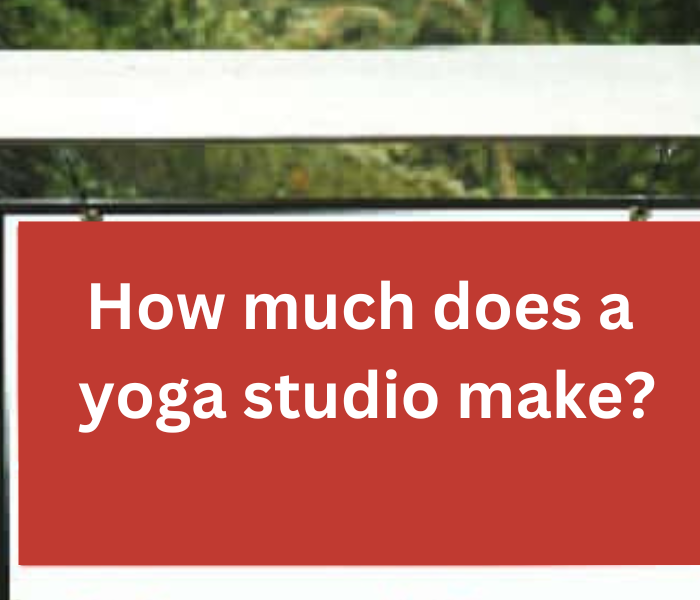How to become a Yoga instructor in 2025: a step-by-step guide for beginners

Becoming a yoga teacher is more than just a career choice. It’s a deeply personal journey of growth, learning, and self-discovery. Whether you’ve been practicing yoga for years or only recently felt the pull to teach, the path to becoming a certified instructor is both exciting and transformative.
If someone had told me after my first yoga class that I would one day be on the other side of the classroom, I probably would have laughed. Turns out, things happen exactly when they are supposed to, I just needed time to absorb the practice.
If you feel drawn toward deepening your practice and sharing your knowledge with others, I’m here to hold your hand and walk you through the process, step by step.
This guide breaks down everything you need to know about becoming a yoga teacher, from choosing the right training program to building a sustainable career.
Getting started: Yoga teacher training
The first step toward becoming a yoga instructor is a special certification. Yoga teacher training (YTT) programs are more accessible than ever, with options ranging from full-time intensive courses to part-time and remote options.
Technically, there is no legal requirement to complete specialist training before you become a yoga teacher. However, most prospective employers would only trust a teacher who has a yoga instructor certification and can show off their skills. Students also prefer teachers who have received proper training.
Additionally, many insurance companies only grant policies to teachers or studios who can provide evidence of yoga teacher certification.
If you’ve previously considered yoga teacher training, you’ll know how overwhelming it can be to browse through all the options. This is why our YogiTimes team worked really hard to create this helpful guide and compile a list of the best yoga teacher training online.
Choosing the right Yoga teacher training
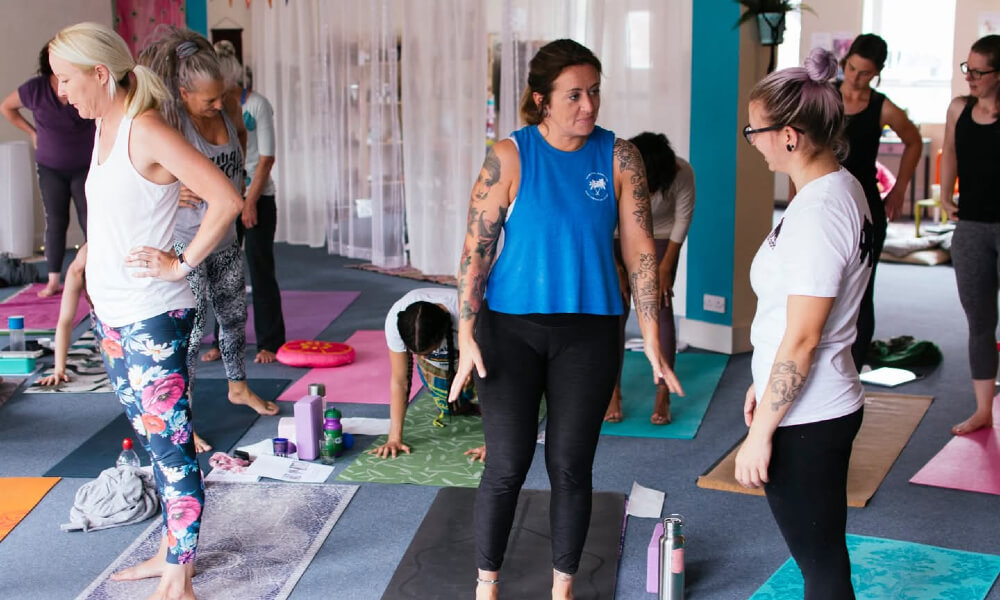
There are various types of yoga teacher training programs, ranging in depth, intensity, commitment, and end result. Choosing the right program for you can be challenging, but ultimately worth the effort.
To make an informed choice, you have to consider various factors:
- Yoga style (or styles)
- Level of training (foundational, advanced, additional)
- Timeline and pace
- Type of certification
- In-person or remote (online)
- Cost
Understanding different aspects of each training ensures that you select a program that aligns with the specific style you want to teach, while also fitting into your budget and lifestyle.
Types of Yoga teacher training programs
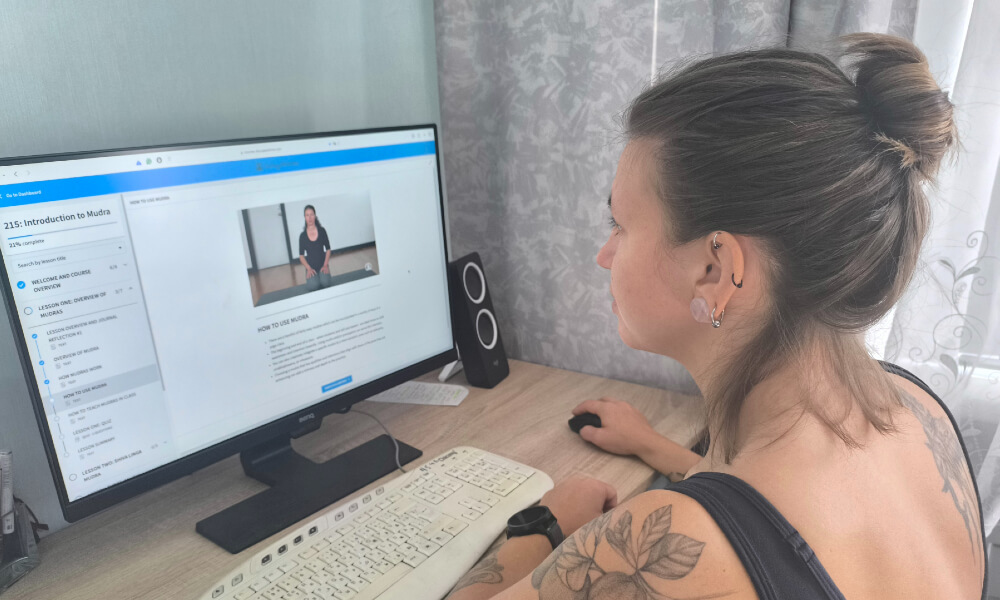
200-hour yoga teacher training is an accepted minimum standard for a basic certification. It’s a prerequisite for teaching or embarking on a deeper, advanced training program.
Typically, a 200-hour training revolves around a specific style of yoga, like Hatha, Vinyasa, or a combination of styles. Most yoga teacher trainings of this type follow a similar structure that encapsulates the important topics of yogic history and philosophy, anatomy, sequencing, and teaching methodology.
A 200-hour training typically takes around four weeks to complete if you study full-time. Part-time programs may take 2-12 months.
300-hour yoga teacher training is an advanced certification. 200-hour yoga teacher training is often considered the minimum requirement for yoga instructors who want to enroll. This training follows a more specialized focus, covering biomechanics, hands-on adjustments, and often niche areas like trauma-informed yoga, yoga therapy, or Ayurveda.
500-hour yoga teacher training is a combination of a 200- and 300-hour training. Some students find it more convenient to complete this as a single program, especially if a studio offers a discount. Some prefer to accumulate 500 hours of training separately, especially if they want to pursue a specific focus in their 300-hour certification.
A huge benefit of a 500-hour certification is that it not only enables you to teach yoga, it also means you can create your own training program. Of course, the latter depends on your experience and expertise.
After your 200-hour foundation training, you can also expand your skills with specialized training to bolster your skills. For instance, I completed an online Yoga Nidra teacher training, enhancing my personal yoga practice and my yoga career.
Similarly, you may enjoy add-on training focusing on prenatal yoga, Yin yoga, advanced pranayama etc.
Understanding Yoga teacher training certificate
Upon completion, you receive a yoga teacher training certificate as proof of your training. To prospective employers and future students, your certification signals that you absorbed the necessary knowledge and passed the assessment process.
If you trained with a yoga school registered with Yoga Alliance, you can also claim the Yoga Alliance membership and become a registered yoga teacher (RYT). You’ll often see this followed by the number of training hours, e.g. RYT 500.
If you see an abbreviation E-RYT, it stands for “experienced RYT”. For E-RYT 200 status, instructors must complete a 200-hour training and log 1,000 hours of teaching. For E-RYT 500, on top of a 500-hour yoga teacher certification, you have to teach at least 2,000 hours.
Yoga accreditation

Even though yoga is an ancient practice, there is no central governing body for teachers or teacher training programs.
However, there are local and global organizations that strive to create and uphold certification and ethical standards for yoga teachers. Among them, Yoga Alliance is the most notable regulatory body. Many studios prefer hiring instructors who have training from a Yoga Alliance registered program.
Yoga Alliance certification
Yoga Alliance is the largest registration body for yoga schools and teachers. Yoga Alliance sets the guidelines for yoga teacher training programs, schools, and individual teachers who choose to register for a voluntary membership.
Since it’s the best-known organization within the global yoga community, for many people Yoga Alliance is synonymous with quality and high standards.
Yoga Alliance does not certify schools but provides a framework for their registration.
To become a registered yoga teacher (RYT), you must complete your yoga teacher training with a registered yoga school (RYS) that adheres to the training standards set by Yoga Alliance.
Yoga Alliance has set standards that each school must follow for their training programs.
To maintain your membership, you also have to pay an annual fee and complete 30 hours of continuing education (CE) every 3 years.
Yoga Alliance alternatives
Depending on your location and intention, you may prefer to register with a different organization, such as British Wheel of Yoga (BWY) or Yoga Australia.
If you have a niche specialty, you may seek accreditation from a specialized regulatory body. For instance, International Association of Yoga Therapists (IAYT) is great for those who completed a yoga therapy course; and if you are looking for breathwork facilitator training, check that the training is accredited with the International Breathwork Foundation (IBF) or the Global Professional Breathwork Alliance (GPBA).
How to select Yoga teacher training
To sum up, you have to know what you want and do your due diligence.
Make the effort to research the training provider to ensure they are reputable. Check the school’s accreditation and compliance with yoga training standards. Be sure to check their reviews, Yoga Alliance rating (if applicable) and NPS.
Check the curriculum and course structure. Ask yourself the following questions:
- Does the schedule work for you? How long does this course take?
- Can you learn independently or do you need live learning to absorb the materials?
- What are the school’s credentials? What are the individual trainers’ credentials?
- Does the training fit in with your budget? Does your chosen school offer scholarships or payment plans? Is there a clear refund policy?
- What style of yoga resonates with you? Is this the style you like to practice, or is this the style you’d like to teach?
- Does the yoga teacher training follow the Yoga Alliance (or another regulatory body’s) guidelines?
Online vs in-person
Consider the flexibility and convenience of online yoga teacher training programs. Many online programs offer recorded material that students can review at their convenience. Online training programs also allow students to progress at their own pace, accommodating individual schedules.
On the other hand, in person trainings typically foster a stronger connection among students and instructors compared to online training. In-person training offers direct feedback from instructors in real-time environments, enhancing learning experiences.
I have trained online and in person; with the right yoga school, the quality of remote education is just as good as contact training.
Now, you can narrow things down and trust your choice. Time to dive into the training!
Preparing for Yoga teacher training
Each training program is different. Check if your chosen yoga teacher training has any mandatory reading, yoga equipment, or forms you have to fill.
In some cases, you might need to have a meeting with the YTT director or your future training mentor.
If you are not sure, don’t be afraid to reach out to the yoga school and ask! One of the green flags of a yoga teacher training provider is clear and prompt communication with every prospective and current student.
Finally, broadcast your intentions! Tell your friends and family about the upcoming training so that they can be your personal cheer squad.
Completing Yoga teacher training
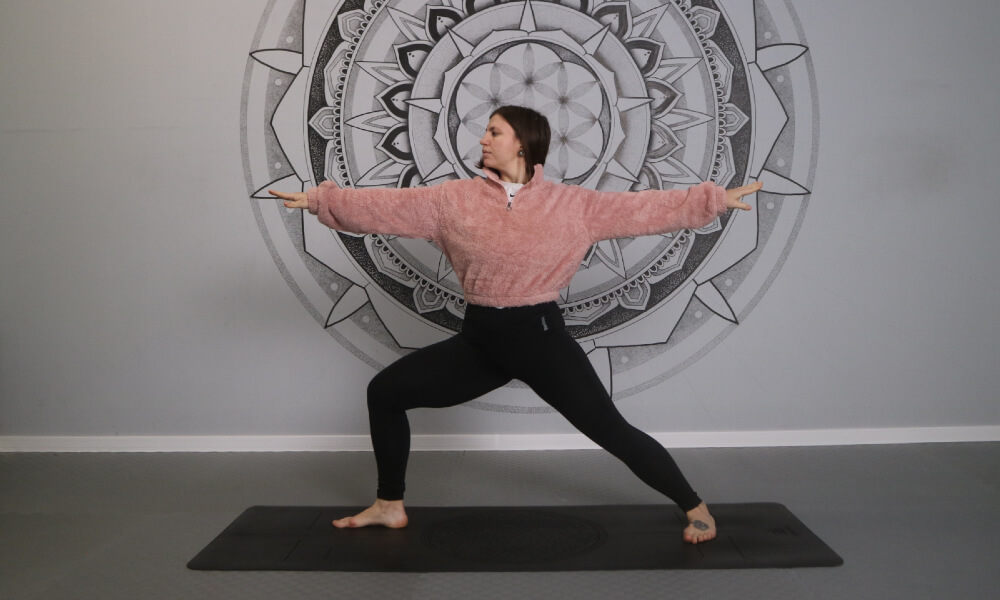
Yoga teacher training is a serious commitment. I am sure you understand that it’s not enough to enroll in the course. You have to actually put in the work if you want to become a certified yoga instructor.
My best advice is to pace yourself and trust yourself. You can do this!
What to expect from a YTT
A yoga teacher training program that is properly curated will cover everything you need to start teaching:
- Yoga history and yoga philosophy
- Yoga anatomy
- Asana breakdown
- Class sequencing
- Pranayama
- Meditation
- Teaching methodologies
- Teaching practice
Some yoga teacher training courses also include a section on business and marketing, Yoga Alliance membership, and inclusivity.
It’s likely that your course will require some independent study and personal yoga practice, in addition to active learning. Trust me, that’s just as important! A good yoga teacher should have a regular personal practice.
Passing the exam and the final assignment
Before you get your certificate, you have to prove that you retained the information and can apply your theoretical knowledge in practice.
At the end of the program, there is typically a test. Some programs require you to pass an exam, others include a written assignment (like an essay).
All programs also assess your teaching skills: how well you can design and sequence a class, how well you can deliver the teaching. This part may be live or recorded.
In my latest teacher training, the final assessment was in collaboration with my fellow trainees to create a cohesive and effective yoga class.
Post certification
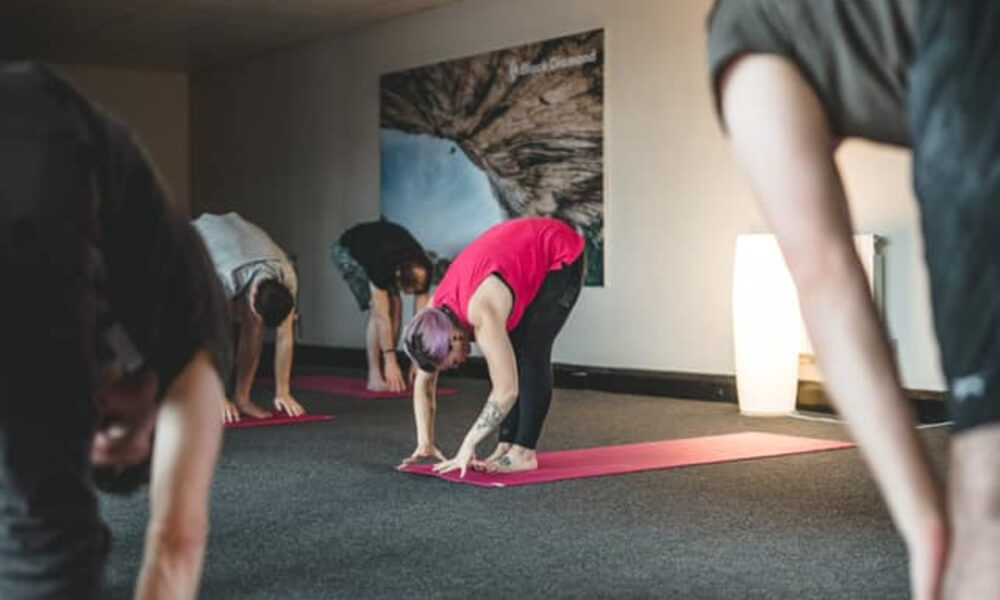
Now that we’ve covered how to become a yoga instructor, let’s talk about what happens afterward.
After completing a yoga teacher training program, you will be a certified yoga instructor. This marks the beginning of your yoga journey, which is crucial for personal growth, deepening your practice, and cultivating the skills necessary to assist others on their paths.
Believe it or not, graduating from a YTT is only the beginning. Now comes the challenging part, being a teacher.
Although the 200-hour training programs are designed to prepare you for the act of teaching, nothing compares to putting it into practice. Sure, it’s a grind: you’ll have to approach studios, manage classrooms full of people, balance your finances, market your business…
In the end, though, it’s worth it! The first time someone comes to your after a yoga lesson to express gratitude, the first time you book a private lesson, the first time you get to negotiate a pay raise. This is a start of a bountiful and beautiful career.
Maintainance and continuing education
Although your yoga teacher training certification does not expire, you will need to maintain your skills with continuing education courses and, well, teaching!
Maintaining your status as a reputable yoga teacher involves completing continuing education requirements, which can vary depending on the certifying organization.
For instance, Yoga Alliance requires registered yoga teachers to complete 30 hours of continuing education every three years. This can include workshops, classes, and online courses.
Continuing education is vital for staying current with the latest research and techniques, thereby maintaining your expertise and credibility in the field. It’s also a great pathway to expanding your scope as a yoga teacher.
Building a career as a Yoga instructor

It stands to reason that your main job as a certified yoga teacher would be teaching classes. However, even within this job description, you have options as a yoga instructor.
Teaching classes
Securing a job as a yoga instructor can be competitive, but there are several strategies to enhance your chances. Start by researching local yoga studios and other venues that align with your teaching style and philosophy.
You can deliver group classes in a yoga studio, local gym, community center, or a different type of fitness facility (such as a rock climbing center or basketball court).
Highlight your certification from a registered yoga school in your applications, as many studios and gyms require this credential. Networking with other yoga teachers and attending workshops and classes can also help you build relationships and learn about job opportunities.
Private tuition
Finding private yoga clients is a challenge that ultimately pays off. Sure, teaching private yoga classes requires extra skill to find an individual approach. However, it’s a great learning opportunity for anyone who wants to hone their craft.
Private tuition also happens to be a goldmine. People appreciate a tailored and attentive approach, which is why individual classes cost more.
Workshops and retreats
In addition to group classes and private yoga lessons, you can host workshops, courses, and yoga retreats. These are special events that offer additional value through more immersive practice.
Most studios look for teachers who demonstrate a strong level of knowledge in teaching methodology and anatomy. In specialized workshops and courses, teachers should intuitively be aware of students’ efforts, difficulties, and aspirations.
Corporate sector and education
Now that people recognize how beneficial yoga is, you can get your foot in the door by teaching corporate wellness classes, as well as yoga or mindfulness classes at schools, rehabilitation centers, and even medical facilities!
Online Yoga classes
It’s up to you whether you teach online or in person. Online yoga is becoming increasingly more popular, since it requires very little financial investment. Online classes are also more accessible for people who cannot commute or those who have additional responsibilities (like childcare).
A great advantage of online classes is that you can reach a wider audience transcending countries and time zones.
Best of all, when you’re an independent online teacher, you can curate everything from the duration and difficulty level to class size and prices.
Charity and community events
Yoga teachers should focus on building a solid student base through effective marketing and engagement strategies.
Offering free classes at charity and community events can help you build a network of prospective students, while also giving back to your community.
Compensation for Yoga teachers
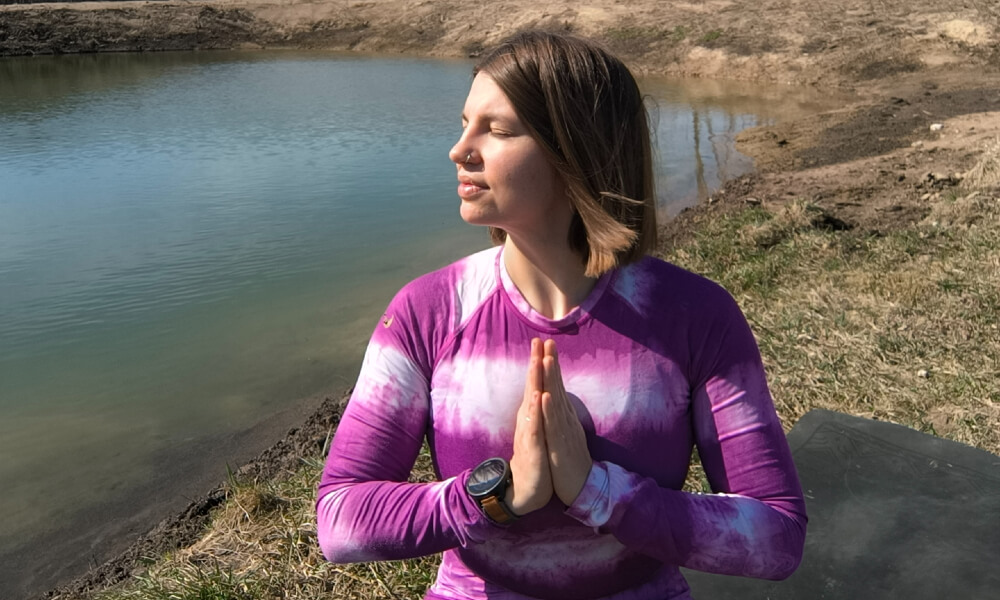
Let’s get real for a moment. While it is possible to earn a living as a yoga teacher, it’s a very different process from salaried or even hourly jobs.
Most yoga teachers work as independent contractors, billing the studio based on the number of hours taught. It’s a beneficial arrangement since it does not involve venue costs, equipment, or marketing on your part.
The hourly wage varies based on location, format, your qualifications, and negotiation skills. Special events such as workshops or courses are worth more since they require more commitment and a larger value. Yoga instructors can expect to earn between $31,000 to well over $100,000 per year.
Start Your business
While teaching on behalf of a studio is convenient, it does not pay very much. If you have the opportunity to market your clasfses directly to your audience, building your own classes is a good strategy.
Of course, this approach requires you to pay for venue hire, equipment, insurance, booking software, etc. However, it also means that you don’t have to share your take-home pay.
Perks and benefits
In my experience, yoga studios and gyms include a complimentary membership for teachers and trainers. If you teach at several different studios, you’ll have access to a multitude of yoga classes and workshops.
Some yoga studios also incentivize their teachers with free or discounted continuing education courses, First Aid training, and liability insurance.
On the other hand, as an independent contractor, you are not likely to receive benefits like health insurance, sick pay, or paid time off.
Challenges you’ll face
Being a yoga instructor is not an easy job. It requires a lot of time and effort on your part. It is also a serious financial and emotional investment. A teacher needs to be both passionate about yoga and maintain a relaxed demeanor outside of it.
I think it’s fair to say that most of us don’t pursue a yoga teacher career because of the money or adoration. Instead, it’s a journey of personal growth and helping others that can be a rewarding and sustainable career.
Some days you may question your decision to embark on this path. Some days, only one person will show up to your class. Some days, you’ll encounter a rude client and wonder if you’d made the right choice.
But in your heart, you’ll know that yoga is about facing these challenges with calm and bravery. You’ve got this!
Conclusion
If you read this far, you’re ready to become a yoga instructor. Exciting, isn’t it?
- The first step is to complete a 200-hour yoga teacher training.
- Do your research before you commit to a teacher training program.
- Select an in-person or online yoga teacher training that corresponds with your needs.
- Association with Yoga Alliance or a similar organization is a good marker of quality.
- Advanced teacher training (300-hour YTT) can increase your value as a yoga teacher.
- Specialized teacher training (prenatal yoga, Yin yoga, Yoga Nidra) can increase your value as a yoga teacher.
- It is important to support your certification with continuing education and teaching experience.
- There are various job opportunities for Yoga Alliance certified yoga instructors.
The yoga journey to teaching isn’t just about mastering poses or memorizing sequences; it’s about finding your voice as a teacher and sharing the practice in a way that resonates with you.
FAQs
The primary qualification is a 200-hour yoga teacher training certification. Some teachers pursue advanced 300-hour or 500-hour programs to deepen their knowledge and expand teaching opportunities. The latter also allows the opportunity to become a teacher trainer.
It typically takes 2–12 months to complete a foundational 200-hour Yoga Teacher Training (YTT) program, which is the minimum requirement for a certified yoga instructor. The timeline can vary based on whether the training is full-time or part-time.
Yes, yoga instructors can make money, but income varies depending on location, experience, and the type of classes offered. Many instructors earn additional income through workshops, private sessions, or online courses.
The 200-hour certification is the standard starting point. Look for programs accredited by Yoga Alliance, as this is the most recognized standard worldwide.
Unlike real estate or medical professions, you don’t need a license to teach yoga professionally. However, you need a recognized certification, such as one from Yoga Alliance. Most countries also require a public liability insurance.
There is no strict timeline. Some people practice for decades before taking this step, others choose to become teachers early on. It’s advisable to practice yoga regularly for at least 6–12 months to build a strong foundation before pursuing teacher training.
It’s possible, but most training programs recommend having prior yoga experience to ensure you’re familiar with foundational practices before teaching. Some programs offer a course preparing novices before they embark on the training journey.
A certified yoga teacher is anyone who has successfully completed a YTT program. To become a registered yoga teacher (RYT), you must attain the certification from a registered yoga school (RYS), accredited by Yoga Alliance. Then, you have to register and maintain a Yoga Alliance membership.
The only way to become certified is to enroll in and complete a yoga teacher training program. Many schools offer in-person or online training options.
While a license isn’t required, becoming a yoga therapist involves completing a specialized yoga therapy program, typically accredited by the International Association of Yoga Therapists (IAYT).
Becoming a yoga therapist requires additional specialized training beyond a 200-hour certification. A 500-hour program or a dedicated yoga therapy certification, often taking 1–3 years, is required.
